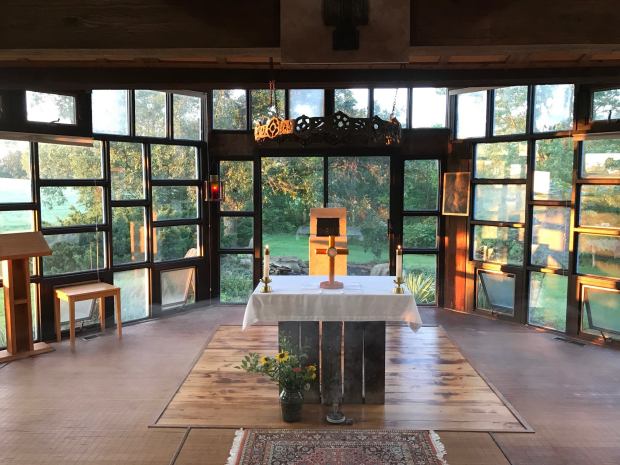Lenten Campaign 2025
This content is free of charge, as are all our articles.
Support us with a donation that is tax-deductible and enable us to continue to reach millions of readers.
My wife and I got the chance to attend a retreat last weekend at Christ’s Peace House of Prayer in the Archdiocese of Kansas City-Kansas, a retreat center we dearly love.
Retreatants’ rooms are small, two-room cabins dispersed in the sprawling wooded grounds, under a canopy of green leaves near a pond, with squirrels scurrying up trees and birds chirping everywhere.
Or, it’s usually like that.
But we went in February, which meant long walks through bare trees and dead leaves with our faces turned downward, blocking the wind and on the lookout for ice and mud in the melting snow.
It was a full immersion in February.
In medieval England, the month was called Solomonath, “mud month,” while in European nations it was named for various forms of ice. Romans used the word for “purification,” Februum, to name the month — as if it were more a trial to be endured than a month to be enjoyed.
We treat it that way too. February is 28 days long (usually), which is mercifully short, but the fact that it is so short means that it is the only month that sometimes has no full moon, as if even the moon avoids February.
But as short as it is, it is still 28 days long, just long enough for four full weeks of work — weeks which see us at the office each day, since it’s the month with fewer vacation days claimed than any other.
Usually, the chapel at Christ’s Peace House of Prayer is like a window to Eden.

I’m always fascinated at all the temples you can see from this particular chapel.
Solomon built the Temple in Jerusalem to God’s specifications, to be a place where God could “tabernacle” with his people. But the whole world was his original temple.
But God originally created the world to be that, everywhere. When the book of Genesis describes the creation of the world, it uses Temple language like “firmament,” or “ceiling,” and “two great lights,” the sun and moon, like Temple candelabras, and a rock flowing with water.
In the chapel in Christ’s Peace House of Prayer you can see every kind of temple. There is the tabernacle, the new literal dwelling place of God, and through the window there are trees and grass under a blue dome. There is even a rock flowing with water on the other side of the glass just behind the altar.
And those of us looking out in the scene are temples of the Holy Spirit too.
But in February, it was too stark to be a temple. It reminded me of Flannery O’Connor.
The view through the window behind the altar was harsh and dead with pale grass, old snow, and dirty ice.
It was the last day of Christ’s infancy in the Church calendar — the Vigil of the Feast of the Presentation, 40 days after Christmas — and it made me think of O’Connor’s explanation of why Jesus came in the winter.
A girl preacher in her novel The Violent Bear It Away said he wanted followers who would be true to the “winter will” of God.
“Jesus came on cold straw,” she said. The world rejected the idea that a “blue, cold child” could be God’s son, but, “Love cuts like the cold wind and the will of God is plain as the winter,” she said.
Looking out on the winter scene, I wrote in my notebook, “You can’t change the laws of nature. You have to change yourself to accommodate them. God doesn’t change for us either. We have to change for him.”
That was my lesson for winter, I figured. Until the next day.
At Morning Prayer for the Liturgy of the Hours we prayed the Canticle from Daniel, that describes the Eden temple of the world.
“Everything growing from the earth, bless the Lord. You springs, bless the Lord. Seas and rivers, bless the Lord,” we prayed. “All you birds of the air, bless the Lord.”
But then it got really specific to February:
“All you winds bless the Lord; praise and exalt him above all forever.” “Cold and chill bless the Lord, praise and exalt him above all forever.” “Frost and chill, bless the Lord … Frost and snow, bless the Lord … Light and darkness, Bless the Lord.”
God is present everywhere in his essence, presence and power, just behind the veil of creation, so that everything glows with his beauty, truth, and goodness. Even in February.








